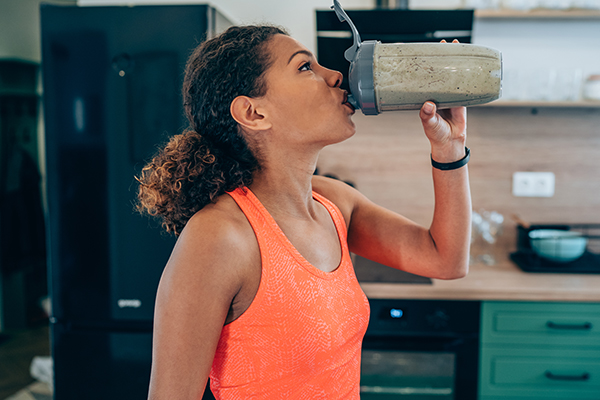How to Bulk and Cut to Transform Your Body

Cycling between “bulking ” and “cutting” is a common strategy for getting ripped.
During the bulking phase, you create a calorie surplus while training in beast mode to build as much muscle mass as possible.
During the cutting phase, you create a calorie deficit in order to shed any excess fat you may have gained during the bulking phase — ideally without losing any of your hard-earned muscle mass.
It’s a popular tactic, but is it the best way to transform your body?
And do you really need to bounce back and forth between bulking or cutting, or can you work towards both goals at once?
Here’s what you need to know.
Intro to Bulking and Cutting

Bulking and cutting are opposite processes, which is why some bodybuilders prefer to focus on one goal at a time.
“Bulking, or building muscle, is an anabolic process (building up),” says Krista Maguire, R.D. “Cutting, or losing weight, is a catabolic process (breaking down).”
But it is possible to pursue both goals at once.
“It’s tough to do them simultaneously — but not impossible if you find the right balance and go slowly,” says Maguire. “This is known as body recomposition.”
How can you strike that ideal balance?
“In addition to resistance and weight training, you’ll want to be in a slight caloric deficit — but not too much — while consuming enough protein to maintain and build lean muscle,” she explains.
Whether you’re bulking and cutting at the same time or alternating between the two, a consistent nutrition plan and workout routine will be key.
How to Bulk
“The goal of bulking is to gain as much muscle as possible,” Gelhbach says.
To do this without gaining excess weight, you’ll need to challenge yourself during your strength training workouts and make sure you’re eating enough protein and calories to support muscle growth.
Nutrition for Bulking

Bulking requires a calorie surplus.
“Increase your calories above maintenance mode, but don’t go too crazy,” Maguire says.
But if you’re creating that surplus by loading up on empty calories, a.k.a. “dirty bulking,” your body will likely store those extra calories as fat.
So it’s important to be mindful of where your extra calories are coming from.
“Focus on your strength workouts and consuming enough high-quality protein to help refuel and build lean body mass,” Maguire says.
Again, aim for around 20 to 30 grams of protein per meal.
“More protein isn’t necessarily better,” Maguire adds. “Research shows that 40 grams of protein per meal weren’t significantly more advantageous for muscle protein synthesis than 20 grams of protein per meal.”
Workout Plan for Bulking

To maximize hypertrophy, your strength training workouts “should focus on lifting heavier weights and stimulating muscle growth,” Gehlbach says.
“This can be done by using a variety of rep ranges — 8 to 15 reps per set is a good starting point — as well as by incorporating training techniques like supersets, drop sets, and forced reps,” he adds.
A good rule of thumb: Choose a weight that challenges you to perform six to 12 reps.
“Rest periods between sets should be enough where you are able to catch your breath and perform the exercise with perfect technique, hitting at least your minimum rep ranges,” Gehlbach says.
In practice, that typically means limiting your rest between sets to at most 90 seconds.
How to Cut
“The goal of cutting is to lose fat while preserving muscle mass,” says Matt Gehlbach, C.S.C.S., owner of Garage Gym Fit.
“You need to make sure you’re eating enough protein so your body doesn’t start breaking down muscle tissue for energy,” he adds. “And you need to put in a lot of hard training to make sure you’re maintaining the muscle you currently have.”
Nutrition for Cutting
“The focus should be a slight caloric deficit so you don’t break down the lean muscle you wish to maintain or build,” Maguire says.
The keyword here is slight.
You need to make sure you’re still getting enough calories and protein to fuel muscle growth, Maguire notes — which means you may lose weight more slowly than you’d typically expect when following a nutrition plan for weight loss.
Maguire recommends aiming for 1.2 to 1.7 grams of protein per kilogram body weight per day.
This should be spaced out evenly throughout the day — “ideally 20 to 30 grams of protein per meal or snack to maximize muscle protein synthesis,” she says.
Workout Plan for Cutting
When you think of fat-burning workouts, cardio may be the first thing that comes to mind.
But strength training can also get your heart pumping and help you burn fat fast.
“Strength training alone should be effective, particularly if it focuses on compound movements such as deadlifts, squats, rows, and presses,” says Steve Theunissen, an R.D.N., ISSA/IFPA Certified Personal Trainer, and author at Smart Fitness Results.
To cut weight without losing muscle mass, Theunissen recommends following a consistent weight-training schedule that includes full-body strength workouts.
Limit your rest periods to 60 seconds or less.
How to Bulk and Cut the Right Way
What’s the best way to cut and bulk?
These tips can help you find an approach that works for you.
1. Pinpoint your strategy
Some bodybuilders prefer to tackle cutting and bulking as separate, alternating phases in their body transformation plan.
Typically, the bulking phase comes first — packing on as much muscle as possible, then cutting to shed any extra weight gained during that process.
However, you may find it more sustainable to follow a consistent routine that helps you cut and bulk at the same time.
LIIFT4, for example, combines heavy lifting with intense cardio to help you lose, weight, build muscle, and transform your body in four days a week.
2. Be committed
It’s definitely doable to lose fat while building muscle, but it takes a lot of hard work and dedication, Gehlbach says.
You’ll need to tighten up your nutrition, eat plenty of protein, and follow a consistent strength training program.
“If you can stick to that routine and keep your diet clean, then you should be able to lose the fat without losing any muscle,” Gehlbach adds.
3. Don’t skip R&R
This is key! Rest plays an important role in muscle repair and growth, so make sure you have recovery days built into your workout schedule.
Sleep is also essential for muscle recovery, so when you’re trying to bulk up, getting enough zzz’s each night can help support your goals.
